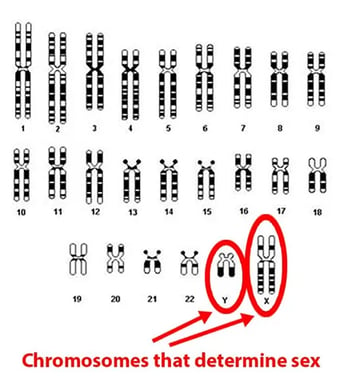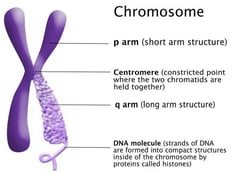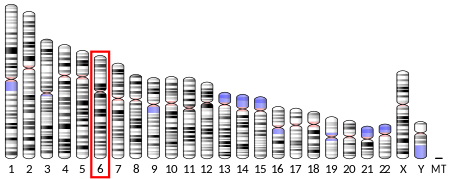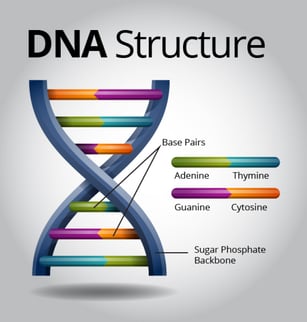

GENETICS 101
Genetics are an overwhelming and difficult topic to understand. This is an attempt to breakdown genetics to understand the impact of the HIST1H1E gene on the function of the human body.
What Is a Gene?
Genes are the instructions for life as we know it. They affect your development before you're even born and play a role in everything from your appearance to your personality. Genes contain information about your heritage and your risk for certain diseases. Understanding your genes is part of understanding yourself, and you can use information about genetics to make decisions in your daily life.
Each chromosome contains genes. The Human Genome Project has estimated that humans have between 20,000 and 25,000 genes. Genes carry the information that determines your traits, and how your body grows and develops. Genes are made up of DNA, which has its own alphabet made of just 4 letters — A, T, C, and G. These stand for the 4 chemical building blocks – adenine, thymine, cytosine and guanine. These four letters are put together into different combinations and make up each of our genes. *Remember these letters. These will be important later when we discuss your child’s genetic lab report on Genetics and HIST1H1E.
Genes provide instructions for creating proteins that play a critical role in many functions of the body. When a mutation of a gene occurs, the protein product may be faulty, inefficient, or absent. Depending upon the functions of the particular protein, this can affect many organ systems of the body.
Chromosomes
Each person has 46 chromosomes that come in pairs – 23 are from your mother and 23 from your father. Chromosomes 1 through 22 are the same between men and women. The 23rd pair are the “sex chromosomes” which determine whether a person will be a male or female. Females have two X chromosomes and males have one X and one Y chromosome.
Each chromosome has a short arm (P) and a long arm (Q):




The HIST1H1E gene is located on the large histone gene cluster on chromosome 6. The exact location is 6p22.2.






EXAMPLE:
If you are making cookies and you leave out baking soda, you will still end up with cookies. They are just going to taste, and potentially, look different from what you expected. It is the same when an individual has a HIST1H1E variation; one ingredient in your child was either left out, added or duplicated. You still end up with a child, they just function differently from what you expected.
It’s possible to have a mutation that has no effect. These types of changes are called “variants of uncertain significance.” You may see this on your child’s whole exome lab report or may have seen it prior to the medical community finding significance of the HIST1H1E gene. Since the function of the HIST1H1E gene is linked to physical and cognitive impairments, any variations can have an impact on the individual.
Please let us know if there is a term we missed or something on this page you feel needs more explanation. We appreciate your feedback! Contact us at info@hist1h1esyndrome.com